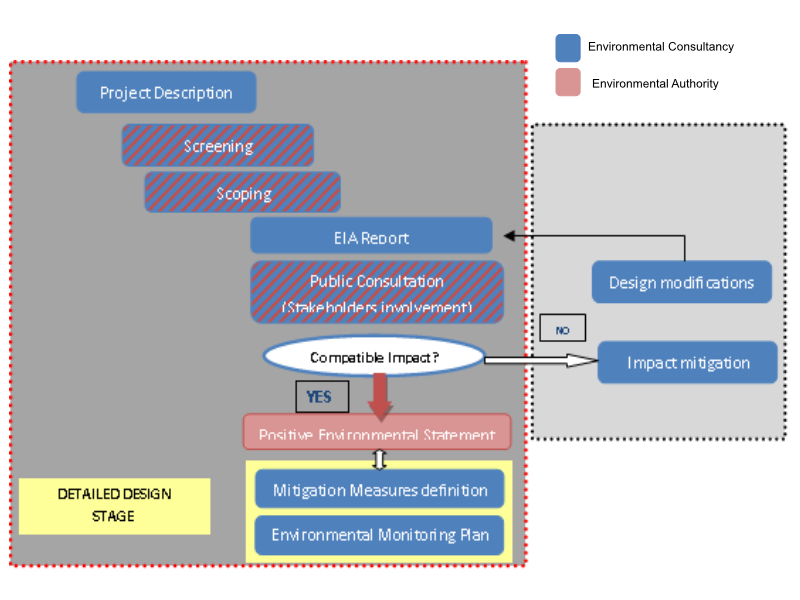Environmental Impact Assessment - Monitoring
Our scope of works includes the whole Environmental Evaluation process, namely:
- Identification of environmental factors and their analysis and project’s impact on them.
- Public consultation and administrative management for the production of an Environmental Statement for the EIA report.
- Establishment of a Mitigation Measures Project for the detailed design and an Environmental Monitoring for the construction phase.
We conduct the Environmental Impact Assessment (EIA) Procedure of Projects, Plans and Programs pursuant European Directives (2001/42/EC and 85/337/EEC) and national and regional regulations.
Environmental Evaluation for a civil infrastructure project, involves the following stages:
- Screening (authorities and relevant associations information & consultation period)
- Scoping (establish terms of reference for EIA)
- Environmental Impact Assessment Report development (methodology design, baseline data collection, impact analysis, preliminary mitigation measures identification and environmental monitoring plan)
- EIA Report submission to competent authorities so that they conduct a public consultation (stakeholder’s involvement).
- Mitigation measures detailed definition (drawings, bill of quantities and tender documents), and Environmental Monitoring Plan design. Being all process compliant with Environmental Statement.
We provide our extensive environmental assessment regulations and procedures experience and knowledge in all relevant areas, namely: wildlife, protected areas, statutory regulations, biodiversity, landscape management, integration and monitoring.
EIA process approach followed for this project is outlined below with reference to the roles of both the consultant and the authority and the relationship and joint procedures to be carried out by each party.

Our team not only has an in-depth understanding and expertise in all relevant environmental factors like hydrological and geological variables, flora, wildlife and protected areas, but also in the technical side provided by project designers and a key input to understand the project implications.
We have a comprehensive capacity for applying methodologies and evaluate both quantitative and qualitative impacts by using geographical information systems (GIS), scientific references, models, and/or expert’s opinions as necessary.



